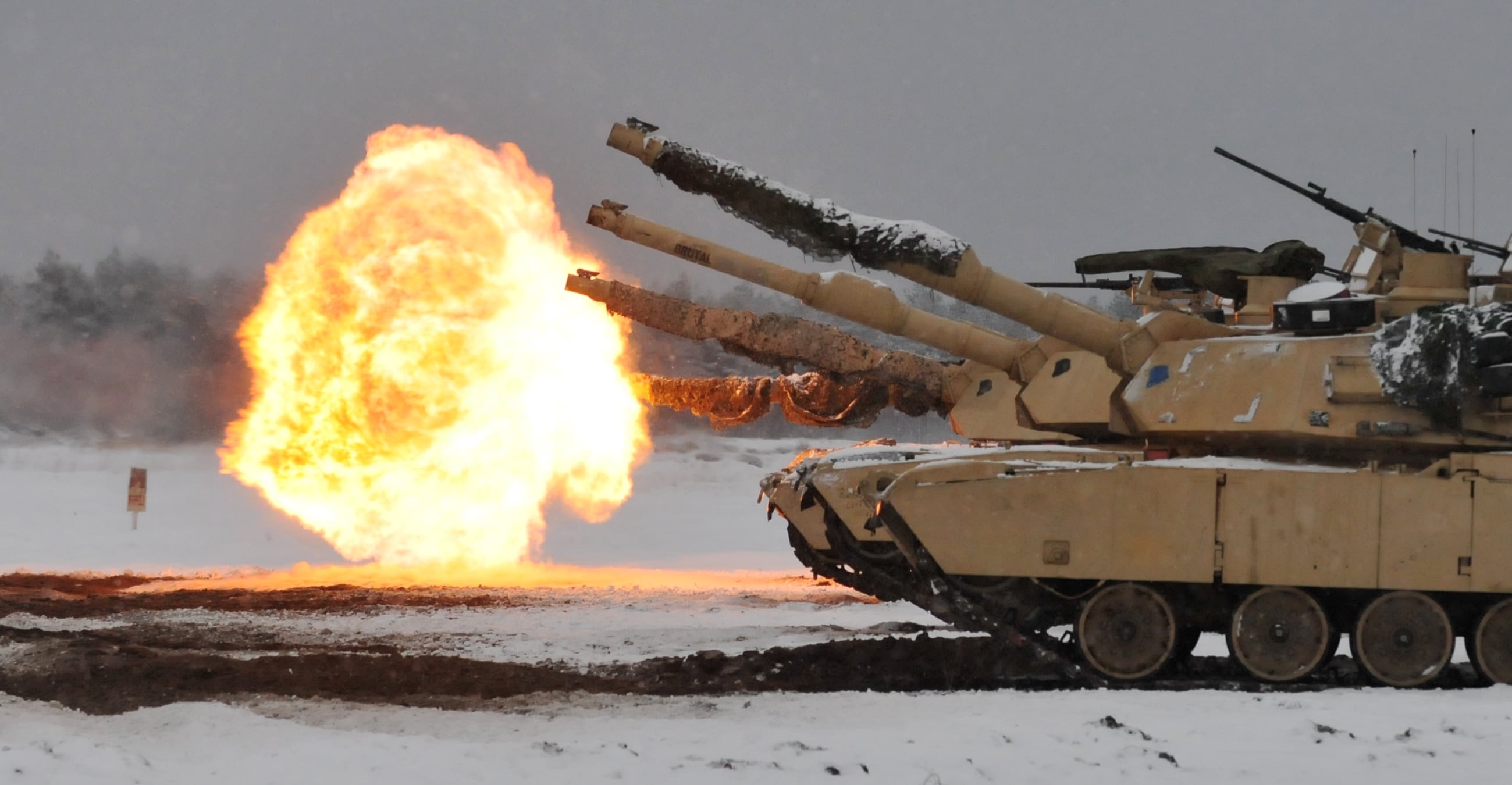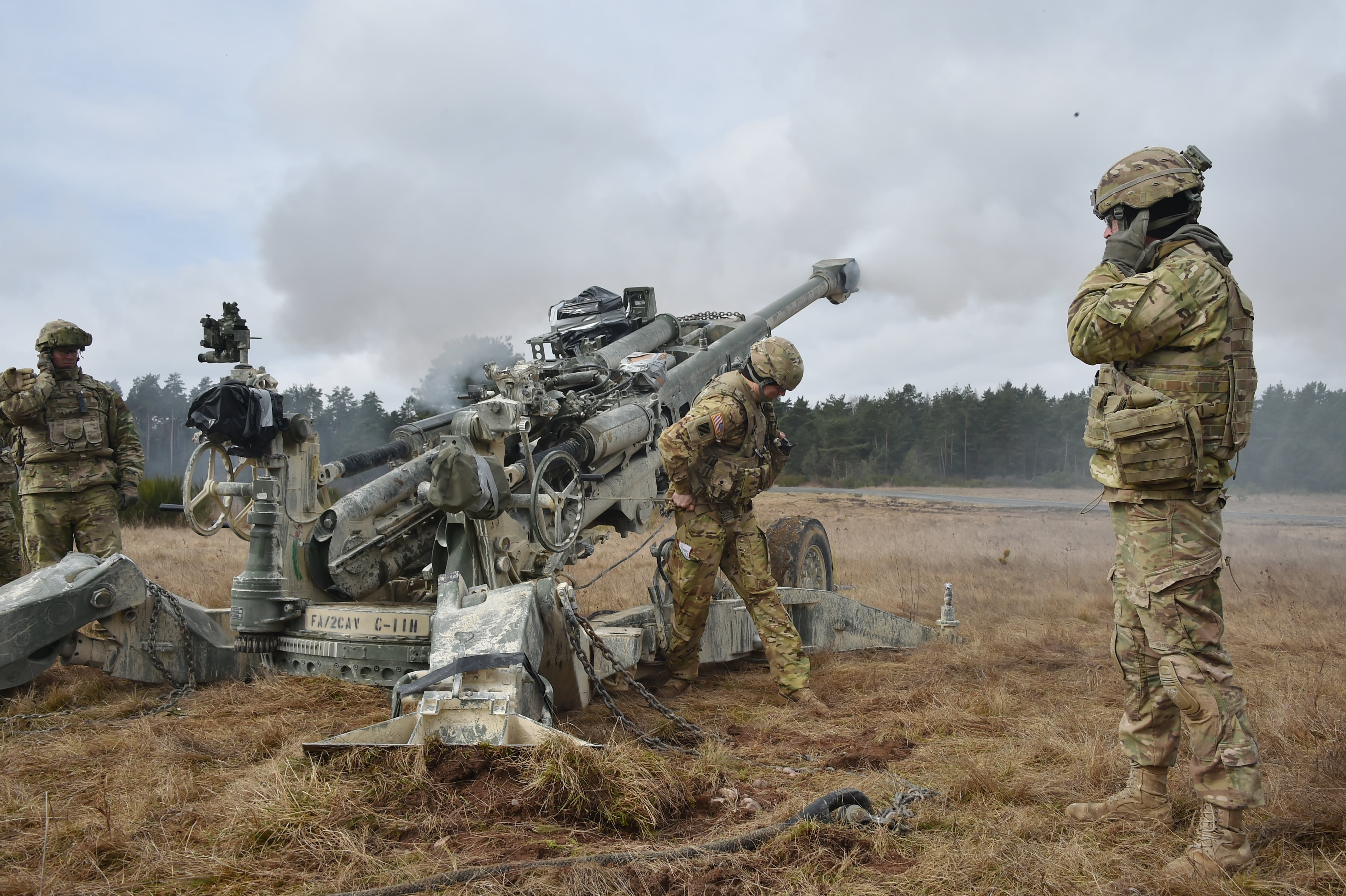Three years ago, the Army rolled its tanks out of Europe after decades of post-World War II and Cold War presence. But that didn’t last long.
As the last M1 Abrams tanks and Bradley Fighting Vehicles shipped out, Russia annexed the Crimea region of neighboring Ukraine and stepped up its aggression in the Black Sea, routinely flying fighter jets low over U.S. ships.
"Since the fall of the Berlin Wall, we have enjoyed a respite from worrying about the basic security of the European order," David Shlapak, an international security analyst at the RAND Corp., told lawmakers in a March 2 House Armed Services Committee hearing. "That respite, ladies and gentlemen, is over."
So after drawing down 10,000 soldiers and closing posts in places like Bamberg and Heidelberg, the Army is stepping up its game — again — in Europe.
"This is about the United States’ contribution to NATO’s decision to transition from assurance to deterrence," U.S. Army Europe commander Lt. Gen. Ben Hodges told Army Times.
At July’s NATO Summit in Warsaw, Poland, Hodges said, the alliance announced it would officially upgrade from an assurance posture to a deterrence posture, meaning "you have to have real capability — the capability to compel or to defeat," he added.
To do that, the Army has beefed up its Europe mission, sending back tanks, helicopters and logistical support and putting on dozens of joint exercises throughout the year from Estonia down to Bulgaria — roughly the length of the entire east coast of the U.S. — to keep soldiers trained and demonstrate what NATO can do if it’s backed into a corner.
The Army also launched full nine-month, back-to-back armored brigade combat team deployments to Europe.
"War is expensive in both treasure and lives," Brig. Gen. Timothy Daugherty, head of operations at U.S. Army Europe, said. "Preparing for war is a lot cheaper than executing one."
The situation is a lot like it was in the 1980s and 1990s, when both Daugherty and Hodges spent time in Europe.
"When I was a lieutenant, we had 300,000 soldiers over here. You had a huge German army, British army — you even had large Dutch and Belgian formations over here," Hodges said. "And the mission when we had 300,000 was to deter the Soviet Union, assure our allies and protect U.S. strategic interests."
The deja vu is hitting hard.
"Today we have 30,000 soldiers. The mission is to deter Russia," Hodges said. "We have to achieve the same strategic effect with 30,000 that we did with 300,000, so making 30,000 look and feel like 300,000 is our task."
Heel-to-toe rotations
Back in 2015, the Army's immediate response to Russia's rising activity along its western border was to send tanks back to Europe, but for short stints and in small formations spread over the year.
That plan changed at the beginning of 2017, when 3rd Armored Brigade Combat Team, 4th Infantry Division of Fort Carson, Colorado, deployed as the first of a new nine-month, back-to-back rotation.
The BCT got the notification a year ago, brigade commander Col. Christopher Norrie told Army Times. Immediately they began training for Europe.

Soldiers from 1st Battalion, 68th Armor Regiment, 3rd Armored Brigade Combat Team, 4th Infantry Division, based out of Fort Carson, Colo., train in Europe as part of Operation Atlantic Resolve.
Photo Credit: Staff Sgt. Charlene Moler/Army
Throughout the wars in Iraq and Afghanistan, tanks and Bradleys have taken a bit of a back seat as they weren't necessary for counterinsurgency operations against an unarmored enemy.
Russia gives tankers a chance to prepare for a near-peer fight, so Norrie and his soldiers went back to basics. They focused on communications and gunnery, he said, but also on upping their maintenance game.
"This is an armored brigade. We have a lot of people, we have a significant amount of combat power and capability," he said. "It requires a significant focus and attention daily in maintenance, ensuring that every crew member, every soldier in the brigade, took personal ownership of their equipment."
And as soon as the ramps dropped from three ships on Jan. 6 at the port in Bremerhaven, Germany, the clock was ticking.
"In the intervening 62 days, we moved just over 3,000 soldiers, 2,600 pieces of equipment about 380 miles from the port of Bremerhaven down to five assembling areas here in western Poland," he said.
The brigade got to "ready to fight" status in about two weeks, Hodges said.
"They did it in 15 days, which is, frankly, five days faster than I thought they could do," he said.
It was a big difference in turnaround effort from past brigades stationed in Europe.
"As these [regionally aligned force] units get here, unlike units that are stationed here — where we are in charge of all their caring, feeding throughout the year and getting trained — the Army has done an amazing job sending these units here ready to train," Daugherty said. "Right when they get here, they're already trained and there's no prep work that's needed. There's no certification, no taking them to the training center. It's all about taking them out where they need to go."
It's a better option than a complete 180-degree turn and permanently stationing units in Europe again, he added, at least for the time being.
"I think that any surge of forces over time that is episodic is better than an episodic version of putting soldiers in for a couple years to be stationed, and then you change your mind — or the atmosphere has changed in that position — and then you pull that unit out that has been stationed there," Daugherty said.
Air power
As the armored brigade gets situated, another element has arrived: air power.
The 10th Combat Aviation Brigade touched down in late February as part of the first of a rotation of aviation brigades, giving USAREUR the air support element it needs to complement its new armored presence
"I'm not an aviator, but I don't want to do anything without aviation," Hodges said.
In total, 2,200 soldiers, 86 helicopters and more than 700 pieces of equipment will go to Germany, Latvia and Romania.
And later this month, a combat sustainment support battalion — with a mix of active, reserve and National Guard soldiers — will arrive to run the logistics for the two rotational brigades.
"That will double our logistics capability," Hodges said. "Now that I'm an old person, all I care about is logistics anyway."
As a whole, the rotational units will bolster the 30,000-strong Army force permanently stationed in Europe — 4,000 soldiers from the armored BCT, 2,200 from the aviation brigade and about 900 from the combat sustainment support battalion, according to a USAREUR spokesman.
'Live-fire every day'
Once soldiers have landed in Europe, brushed up on training and settled their equipment into their far-flung assignment areas, there's a vast menu of joint training opportunities and multinational exercises to keep them busy.
The U.S. military's presence in eastern Europe has been dubbed Operation Atlantic Resolve, and in addition to ramping up troop presence, USAREUR has increased its exercises and training.
Since his brigade arrived in Poland two months ago, Norrie said, it has gotten three battalions through gunnery exercises. Two of them have headed up to the Baltic countries of Estonia, Latvia and Lithuania to join up with combined arms battalions there. A fourth conducted gunnery in Germany in mid-March.
"We have live-fired every day since we've been here — seven days a week," Norrie said.
They've also integrated with their hosts.
"Just last week, our cavalry squadron conducted combined arms live-fire training with [an unmanned aerial system] overheard, artillery firing in support of our scouts conducting mounted and dismounted operations," Norrie said, adding that it was a Polish UAS along with Polish artillery and a Polish tank participating in the training.
Once all trained up, they spread out to more combined arms battalions in Romania, Bulgaria and Germany, while one cavalry troop will work with Hungarian soldiers.
From there, in addition to smaller local exercises and miscellaneous training, the brigade will team up en masse for the annual Saber Guardian exercise across the Baltic countries in June with more than a dozen NATO allies.
"There's been a significant increase in number, scale and sophistication of these exercises," Hodges said.

Soldiers from the 2nd Cavalry regiment conduct a fire mission with a M777 Howitzer during Exercise Dynamic Front II in Germany. The exercise brings together fires experts from multiple countries to increase interoperability and build relationships. More than 1,400 troops from nine NATO countries participated this year.
Photo Credit: Gertrud Zach/Army
In July, they'll participate in Saber Guardian down near the Black Sea region, in Hungary, Bulgaria and Romania. That exercise will include 40,000 troops from 20 nations and about 17 smaller, linked exercises, Hodges said.
Soldiers will be busy, but a Europe deployment also presents opportunities.
"I've got to depend on junior leaders, so it's not unusual that the senior Army officer in a country is a company commander and his or her first sergeant," Hodges said. "I do think that we are a great leadership lab for the Army. It's nothing to have a convoy do 1,000 kilometers with an NCO or a junior officer in charge."
Assurance to deterrence
Russia's aggression in eastern Europe has prompted the Army's scramble to put boots back on the ground in Europe, and the build-up is growing.
"We're going to do this as long as it is necessary," Hodges said. "I see it as a very sustainable, long-term effort. There's no off-ramp in the future."
The Army is taking a deliberate look at what it will take to make Russia think twice about invading a NATO country.
"I think that the Army is doing a very good job being patient, being methodical in making decisions and finding long-term solutions, and not doing a knee-jerk reaction to something that seems very needed right now," Daugherty said.
Think tanks are also doing research.
A 2016 RAND study found that the U.S. would need three permanently stationed BCTs to fight off a Russian invasion of the Baltics with just a week's notice, a period of time widely recognized as realistic for that situation.
Two RAND analysts discussed their findings with lawmakers on Capitol Hill.
"I wish to be as clear and direct as our findings allow me to be: NATO is not postured or prepared to defend its most exposed and vulnerable member states — the Baltic republics of Estonia, Latvia and Lithuania — against a Russian attack," Shlapak said.
It would take seven total brigades, four from allied countries, to do the job, he said. While a Stryker battalion could come in from Germany and paratroopers can jump in from Italy, he said, it takes too long to bring tanks over from the U.S., and it might still take too long to transport soldiers from the U.S. to tanks pre-positioned in Poland.
U.S. leaders are not prepared to put a number like that on their requirements.
Hodges said he has faith that the other NATO countries are also putting in the work to build their own deterrence.
That includes ramping up modernization and training efforts, as well as sinking more of their budgets into defense, per a 2014 NATO agreement to contribute 2 percent of their GDP by 2024.
"I was in Lithuania just last week. They will be at 2.07 percent by the end of next year — about seven years ahead of schedule. Estonia is already at over 2 percent," Hodges said. "These countries who were there — they have been under Soviet domination before, they remember what it's like. They are absolutely working very hard to make sure that they have the necessary capabilities and preparations to defend themselves."
The Army is also working on pre-positioning equipment for such an event.
"All of the equipment for an armored division will be on the ground here in the next few years," Hodges said. "A fires brigade, another armored brigade, sustainment brigade, division headquarters equipment — that's all being established here."
USAREUR has also been looking for more installations to station soldiers.
The focus, leaders said, is on speed of decision, speed of assembly and speed of action to meet a threat against NATO.
"When it gets there, you've got to make sure that you've got a unit that's ready to fight," Daugherty said. "And I'm talking about, they need to fight like they're the third monkey on the ramp to Noah's ark and it's starting to rain."
Meghann Myers is the Pentagon bureau chief at Military Times. She covers operations, policy, personnel, leadership and other issues affecting service members.





